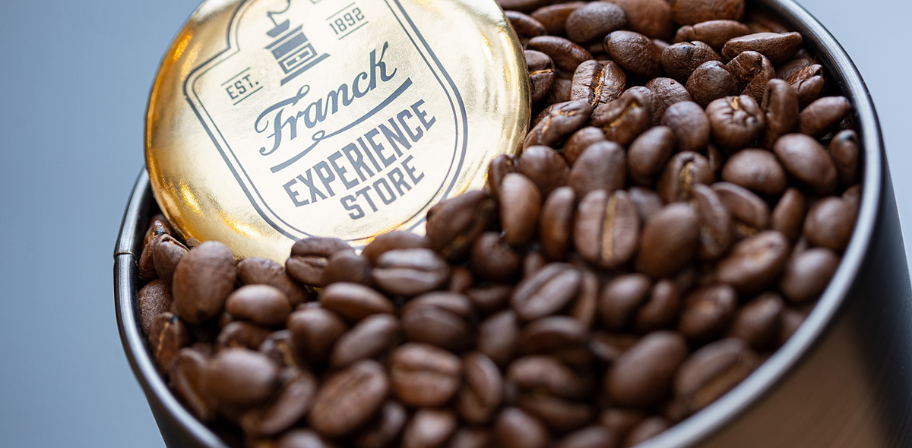Dostava je BESPLATNA za sve narudžbe iznad 30,00 EUR
World of coffee and tea
Coffee through time: The story of a beverage that conquered the world
Autor: Franck d.d.

Coffee is now a global beverage, second only to water in popularity. While the exact beginnings of its consumption remain unclear, we do know that in Ethiopia it was used as an energy snack, with evidence of coffee berries mixed with animal fat having been discovered.
The first written records of coffee consumption date back to 1475, when a coffeehouse named Kiva Han opened in Constantinople. At that time, coffee was a social, political, and religious matter. For instance, in 1511, it was banned in Mecca and Cairo, but the law was quickly revoked due to public pressure. Coffee did not arrive in Europe until the early 16th century, and initially, it was used for medicinal purposes rather than for pleasure.
Venice was the main port where green coffee arrived. In 1600, Pope Clement blessed coffee, making it permissible for consumption throughout Europe. The first coffeehouse in London opened in 1652, established by Pasqua Rosée, who was born in the Republic of Dubrovnik. The sign above the coffeehouse read, "A very good drink for curing gout, dropsy, and scurvy," which is considered the first coffee advertisement in the world. Over the next 100 years, more than 3,000 coffeehouses opened in England.
In France, coffee became popular as an elite and prestigious beverage after King Louis XIV received it as a gift from the ambassador of Mehmed IV. Louis XVI loved coffee so much that he attempted to grow coffee plants in France, but due to unfavorable weather conditions, he was unsuccessful. However, he sent ships to the island of Martinique, where coffee thrived, and soon more than 15 million arabica plants were cultivated there.
Vienna got its first coffeehouse in 1683, opened by citizen Georg Franz Kolschitzky as a reward for his bravery during the Siege of Vienna. This coffeehouse became a popular gathering place for famous Viennese writers like Hugo von Hofmannsthal, Karl Kraus, and Arthur Schnitzler, fostering the Coffeehouse Literature movement. In 2011, UNESCO recognized Viennese coffeehouses as an intangible cultural heritage.
In Croatia, the first coffeehouse opened on April 5, 1748, by merchant Leopold Dun. It was located near Ban Jelačić Square and served tea, hot chocolate, and coffee. The coffeehouse was reserved for high society members, and goods were imported from the Netherlands.
After World War II, there was a coffee shortage, and it was considered a luxury. Industrial production and processing of coffee in Croatia began with Franck, which has been roasting coffee since 1960 to the present day.
In 1887, Ban Khuen-Héderváry enacted a law limiting the number of coffeehouses in Zagreb, and by 1900, the city had 25 coffeehouses, following European trends. Some of the most famous Zagreb coffeehouses were Corso, Bauer, and Kavkaz, each with its own distinct social circle.
Over the centuries, coffee has evolved from an energy snack to a social symbol, continuing to win hearts around the world. Whether we drink it for energy, pleasure, or socializing, coffee has become an indispensable part of our lives.
Proizvod je uspješno dodan u Favorite.
Proizvod je uspješno uklonjen iz Favorita.
Promo kod uspješno primjenjen.




